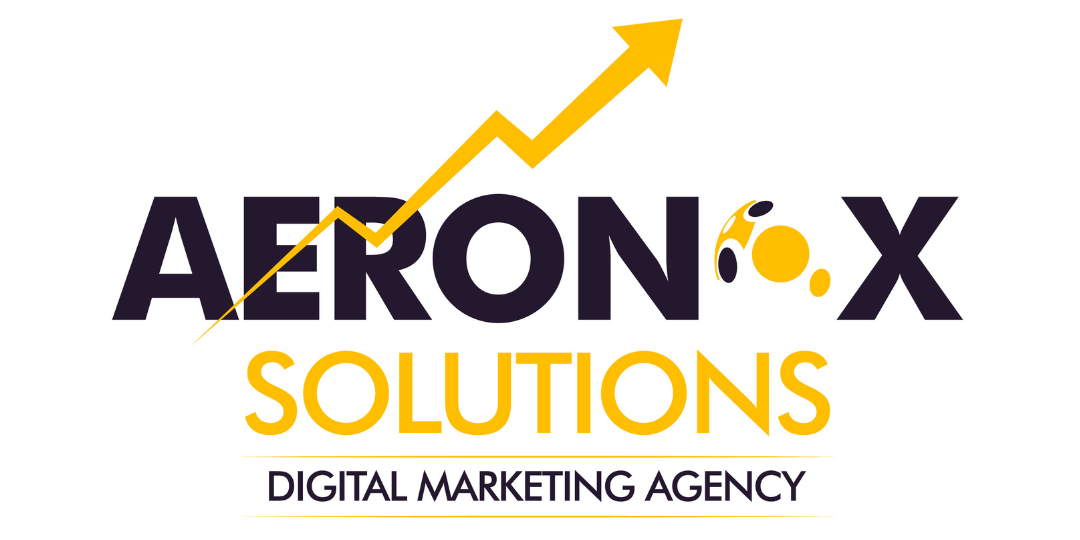Your customers won’t wait so why should your support?
In an era where 90% of consumers expect instant responses, businesses face a critical choice: cling to AI Chatbots vs Traditional Support. The stakes? Faster resolutions, lower costs, and happier customers or the risk of being left behind.
AI Chatbots vs Traditional Support
AI chatbots don’t just answer questions; they transform support into a 24/7 profit engine, handling thousands of queries at once while cutting response times from hours to seconds. But can algorithms truly replace human intuition and emotional intelligence? Or is the winning strategy a hybrid approach that blends the best of both worlds?
This isn’t just about technology it’s about survival in the age of impatient customers. In this guide, I’ll dissect the strengths, weaknesses, and hidden costs of each model so you can deploy a support system that doesn’t just meet expectations but shatters them.
The future of customer service isn’t human vs. bot. It’s about knowing when to automate and when to empathize. Let’s find your winning formula.
What are AI Chatbots?
AI chatbots are intelligent virtual assistants powered by artificial intelligence (AI) and natural language processing (NLP) that can understand, learn from, and respond to customer queries in real-time, providing instant support and personalized interactions. Unlike traditional rule-based bots, AI chatbots analyze context, improve with each conversation, and seamlessly integrate with business systems to handle tasks like order tracking, FAQs, and lead generation all while reducing operational costs and boosting efficiency.
For businesses looking to enhance customer engagement, AI chatbot development services offer tailored solutions that automate support, streamline operations, and deliver 24/7 assistance without compromising quality.
READ ALSO: 3 Best ChatGPT Prompt Engineering
What Are the Main Types of AI Chatbots?
Understanding the differences between rule-based chatbots and AI-powered chatbots is key to choosing the right solution for your business.
- Rule-Based Chatbots operate on predefined scripts, following a fixed decision tree (e.g., “Type ‘1’ for billing support”). They’re simple to deploy but lack flexibility, ideal for basic FAQs but struggle with complex queries.
- AI-Powered Chatbots use machine learning (ML) and natural language processing (NLP) to understand intent, learn from interactions, and respond dynamically just like a human agent. These bots excel in personalized, context-aware conversations.
AI Chatbots vs. Traditional Customer Service: A Comparative Analysis
The modern customer service landscape presents businesses with a critical choice between AI-powered chatbots and traditional human support. This in-depth examination explores every facet of both approaches, providing the insights needed to make an informed decision for your organization. When deciding between AI chatbots and traditional customer support, consider the following key differences.
1. Availability and Response Time Analysis
AI Chatbots:
- Operate continuously without breaks, 365 days a year
- Provide instantaneous responses (typically under 2 seconds)
- Eliminate queue times completely
- Maintain consistent performance regardless of inquiry volume
Traditional Support:
- Typically limited to business hours (average 8-10 hour coverage)
- Subject to holiday schedules and time zone limitations
- Average response times range from 10 minutes to several hours
- Performance degrades during peak periods due to limited staff
2. Comprehensive Cost Breakdown
AI Chatbot Economics:
- Initial development costs vary by complexity (5,000−50,000)
- Monthly maintenance typically 10-20% of development cost
- Can handle 1000+ concurrent conversations
- Cost per interaction decreases over time (as low as $0.01 per chat)
Human Support Costs:
- Average salary: 30,000−50,000 per agent annually
- Additional 30-50% in benefits and overhead
- Training costs: 2,000−5,000 per new hire
- Physical infrastructure requirements (office space, equipment)
3. Capability and Performance Metrics
AI Chatbot Capabilities:
- Process 80-90% of routine inquiries (FAQs, order status)
- Language support for 100+ languages simultaneously
- Consistent accuracy (95%+ for trained scenarios)
- Continuous learning through machine learning algorithms
Human Agent Strengths:
- Handle complex, multi-step problem resolution
- Emotional intelligence for sensitive situations
- Creative problem-solving abilities
- Can interpret ambiguous or incomplete information
4. Implementation and Technical Considerations
AI Implementation:
- Requires 4-12 weeks for development and training
- Needs integration with existing CRM and knowledge bases
- Requires ongoing optimization (5-10 hours monthly)
- Data security and compliance considerations
Human Team Setup:
- Recruitment cycle: 4-8 weeks per position
- Training period: 2-4 weeks per agent
- Quality assurance programs needed
- Performance monitoring systems required
5. Customer Experience Impact
AI Advantages:
- Immediate acknowledgment of inquiries
- Perfect recall of company policies
- Never frustrated or tired
- Available across all digital channels
Human Advantages:
- Builds emotional connections
- Can exercise judgment and discretion
- Handles exceptions gracefully
- Provides personalized recommendations
6. Hybrid Approach Optimization
Best Practices:
- Route simple inquiries to bots (60-70% of volume)
- Escalate complex cases to humans seamlessly
- Use AI for initial data collection before human handoff
- Implement bots for after-hours coverage
- Utilize AI analytics to improve human performance
7. Industry-Specific Applications
Retail:
- Bots for order tracking (24/7)
- Humans for returns/exceptions
Banking:
- Bots for balance inquiries
- Humans for fraud resolution
Healthcare:
- Bots for appointment scheduling
- Humans for medical advice
8. Future Evolution Trends
- Increasing AI emotional intelligence
- Voice-based bot interactions
- Predictive support capabilities
- Augmented reality integrations
- Blockchain for verification
9. Key Decision Factors
Choose AI When:
- High volume of repetitive inquiries
- 24/7 coverage needed
- Budget constraints exist
- Multilingual support required
Choose Humans When:
- Dealing with sensitive issues
- Complex problem-solving needed
- Building customer relationships
- Handling exceptions
For organizations seeking to implement AI solutions, professional development services can create customized implementations that integrate seamlessly with existing operations while maximizing ROI.
READ ALSO: How to Create Viral AI Videos ? 5 Best Tools
The optimal solution for most businesses involves a carefully calibrated combination of both approaches, leveraging the strengths of each while mitigating their limitations.
The Final Verdict: Striking the Perfect Balance in Customer Support
The debate between AI chatbots and traditional customer service isn’t about choosing one over the other it’s about strategically combining both to create an optimal customer experience. Here’s why a hybrid approach represents the future of customer support:
1. Maximized Efficiency Without Sacrificing Quality
The hybrid model allows businesses to automate up to 70% of routine inquiries through AI chatbots while reserving human expertise for complex, sensitive, or high-value interactions. This dual approach achieves:
- Instant responses for common questions (via chatbots)
- Thoughtful solutions for complicated issues (via human agents)
- Seamless handoffs when conversations require escalation
2. Cost-Effective Yet Customer-Centric
By implementing chatbots as the first line of support, companies can:
- Reduce operational costs by 30-50%
- Decrease average handle time by 40%
- Improve agent satisfaction by eliminating repetitive tasks
All while maintaining the human touch that builds customer loyalty.
3. Future-Proof Flexibility
The hybrid model adapts to:
- Seasonal demand spikes (chatbots handle overflow)
- 24/7 global support needs
- Evolving customer expectations
- Emerging AI capabilities
4. Data-Driven Continuous Improvement
Chatbots generate valuable insights that enhance both automated and human support:
- Identifying frequent pain points
- Revealing knowledge gaps
- Tracking customer sentiment trends
READ MORE: 25 Successful Call Center Strategies To Make Omnichannel
1. What exactly is an AI chatbot?
An AI chatbot is an intelligent software assistant powered by artificial intelligence (AI) and natural language processing (NLP). Unlike basic rule-based bots, these advanced systems can understand context, learn from interactions, and provide human-like responses to customer inquiries across multiple channels like websites, apps, and messaging platforms.
2. Will AI chatbots completely replace human customer support agents?
While AI chatbots are transforming customer service, they won’t eliminate human agents entirely. Chatbots excel at handling routine, repetitive queries (like order status checks or FAQs), but complex issues requiring emotional intelligence, judgment calls, or personalized problem-solving still need human intervention. The future lies in collaborative human-AI support systems.
3. Which is truly better – AI chatbots or traditional support?
Each has distinct advantages:
- AI Chatbots provide instant 24/7 responses, handle thousands of simultaneous conversations, and reduce operational costs by up to 30%.
- Human Support delivers empathy, handles nuanced situations, and builds stronger customer relationships through personal connection.
Most businesses find the optimal solution combines both approaches strategically.
4. How should I choose between them for my business?
Consider these factors:
- Volume: High inquiry volumes benefit from chatbot automation
- Complexity: Technical/sensitive issues need human agents
- Budget: Chatbots reduce long-term costs
- Industry: Some sectors require more human interaction
A balanced hybrid model often works best – chatbots for Tier 1 support with seamless escalation to humans when needed.
5. What’s the key difference between chatbots and live chat support?
- Chatbots are automated programs that use AI to understand and respond to text inputs based on pre-trained knowledge
- Live Chat involves real human agents communicating with customers in real-time
Chatbots handle scale and simplicity, while live chat provides personalized, adaptive conversations.
6. Are chatbots effective for customer service operations?
Absolutely, when implemented properly. Modern AI chatbots can:
- Resolve up to 80% of routine inquiries instantly
- Reduce customer wait times to near-zero
- Provide consistent answers 24/7
- Integrate with CRM systems for personalized service
They’re particularly effective for e-commerce, SaaS, and any business with repetitive customer queries.
7. Will traditional phone/email support still matter in 2025?
Traditional channels remain relevant but are evolving:
- Phone support will persist for complex/confidential matters
- Email will handle formal communications and documentation
- Chatbots/live chat will dominate for instant, convenient service
The most successful businesses will offer omnichannel support blending all these options based on customer preferences and use cases.
Businesses that combine AI efficiency with human empathy will lead in customer satisfaction. Start with chatbots for routine queries, use AI to augment (not replace) human agents, and continuously optimize based on performance data.
Ready to transform your customer service? Explore tailored hybrid solutions at aeronoxsolutions.com to build a support system that delivers both speed and substance.
The future of customer service isn’t human vs. machine it’s human + machine, working together to deliver exceptional experiences.



